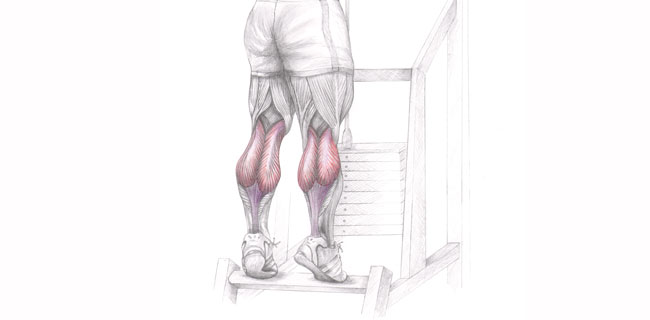Are you satisfied with the size of your calves? If the answer is yes, you’re a very lucky guy and keep doing whatever you’re doing. If the answer is no, don’t stress about it, that just proves that you’re a mortal.
For most regular gym rats, calf size is an embarrassing topic – this is a body part that seems to refuse to grow, no matter how much you challenge it. While it’s true that genetics play a critical role in determining the shape and size of your calves, that doesn’t mean that all is lost for all of us who have less favorable genes. In fact, instead of thinking of calf training as a hopeless torture, you need to start creating ways to completely break down your stubborn calves. Think of your calves as a great test for your dedication and perseverance and instead of allowing frustration to overwhelm you, make the decision to try harder. A lot harder.
There is no such thing as a muscle that can’t grow. You just haven’t found the right way to target it yet. The gastrocnemius and soleus muscles are some pretty tough muscle groups – they are engaged in a repetitive manner every time you move, run, climb and jump, so they’re used to dealing with a lot of load on a daily basis. That’s why you should literally force them to grow by subjecting them to grueling, ball-busting workouts. Believe us, the pain and sweat is going to really pay off once you notice a new layer of lean, three-dimensional thickness in your legs!
Rocky Rogers, a certified personal trainer at Iron City Gym Hardcore in Cypress, Texas, says that when designing your calf training, it’s better to stick to a basic template with standard exercises and rep ranges. But instead of focusing on the number of reps, you should pay more attention to the weight. The most effective approach is the one in which the weights are heaviest early in the workout and get progressively lighter with each exercise. This ensures that you give your 100% while you’re still fresh and achieve a full range of motion on every rep of every set. Once the fatigue sets in, you can gradually lower the weight and continue training without sacrificing your form or the full range of motion.
Here’s the plan.
The Workout
#1. Standing Calf Raise: 3 sets, 10-15 reps

Standing Calf Raise
Pick a relatively heavy weight that you can work with and achieve full contraction in the gastrocnemius. On the first set point your toes inward. On the second one, point the straight ahead and on the third, position them to point outward. This will help you blast your calves from all angles possible. At the top of each rep, squeeze your muscles hard for two counts.
#2. Seated Calf Raise: 3 sets, 20 reps
This exercise emphasizes the deeper soleus muscle, which is where your potential for that extra lower leg thickness hides. Resist the temptation to use too much weight on this one – that will only result in a bouncing motion that won’t stimulate any growth.

Seated Calf Raise
Pick a weight you can comfortably work with and focus on achieving full range of motion and. On each set, perform 20 strict reps to failure, then reduce the weight and rep out to failure again. Repeat this process until there are no more plates left, then rest for a few minutes and move on to the next set.
#3. Bodyweight Standing Calf Raise: 3 sets, 50 reps
By now, your calves should be screaming for mercy. Go to a raised surface such as the base of a power rack and find something to grasp for balance. Employ the same foot placement scheme as in the first exercise (one set with toes pointing inward, one with toes pointing straight ahead and one with toes pointing outward). You probably won’t be able to complete 50 consecutive reps with proper form and full range of motion, but that’s Ok – take as many short breaks as you need but make sure you hit 50 reps with full range of motion and a hard squeezing contraction at the top, no matter what. Then, rest for a full minute and start the next set.
Most guys with weak calves train their legs with zero zealousness and dedication, so it’s no wonder their calves are so reluctant to grow. This program is designed to help you tap into your calf growth potential and build the meanest legs possible, but that implies taking the time to perform a complete, heavy calf workout instead of training them randomly and as an afterthought. A common misconception is that calves need to be trained every day for best results, when in fact such a high frequency can easily lead to a hindered calf development. The sweet spot for calves is two to three hard and heavy workouts per week with two days of recovery between each training – anything more than that will only hurt your gains.
To stimulate admirable calf growth, eat clean and perform this calf-crushing routine for a couple of months. Whenever you start feeling discouraged, just remember that nothing spells ‘tough’ like a pair of massive, carved calves!

